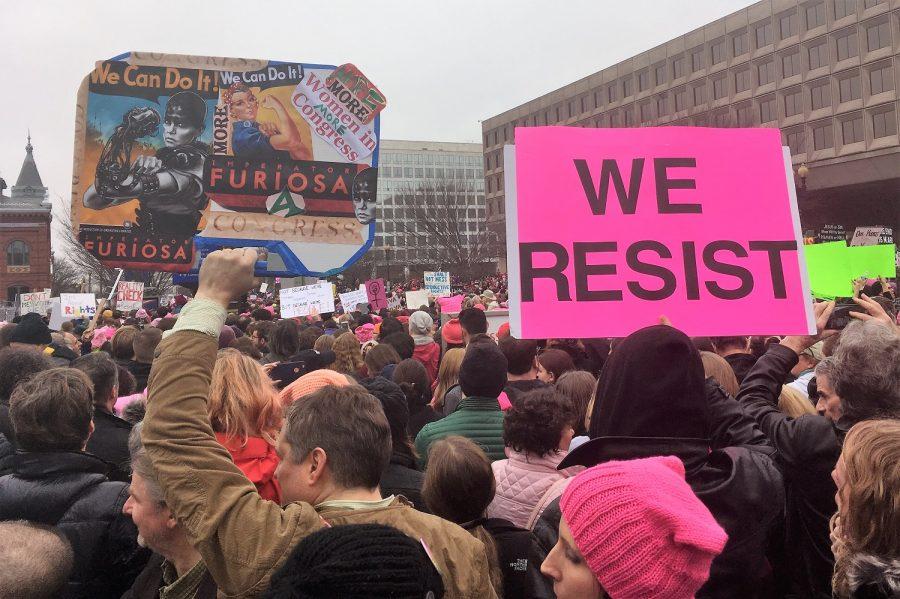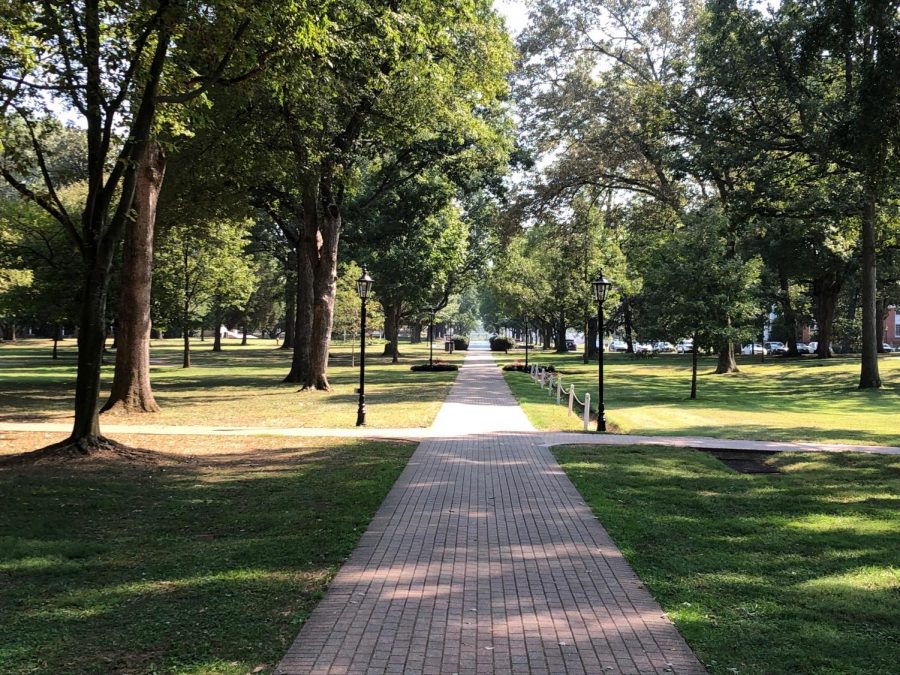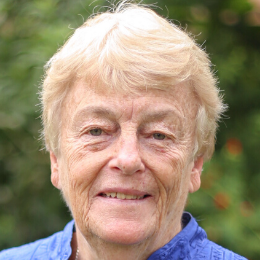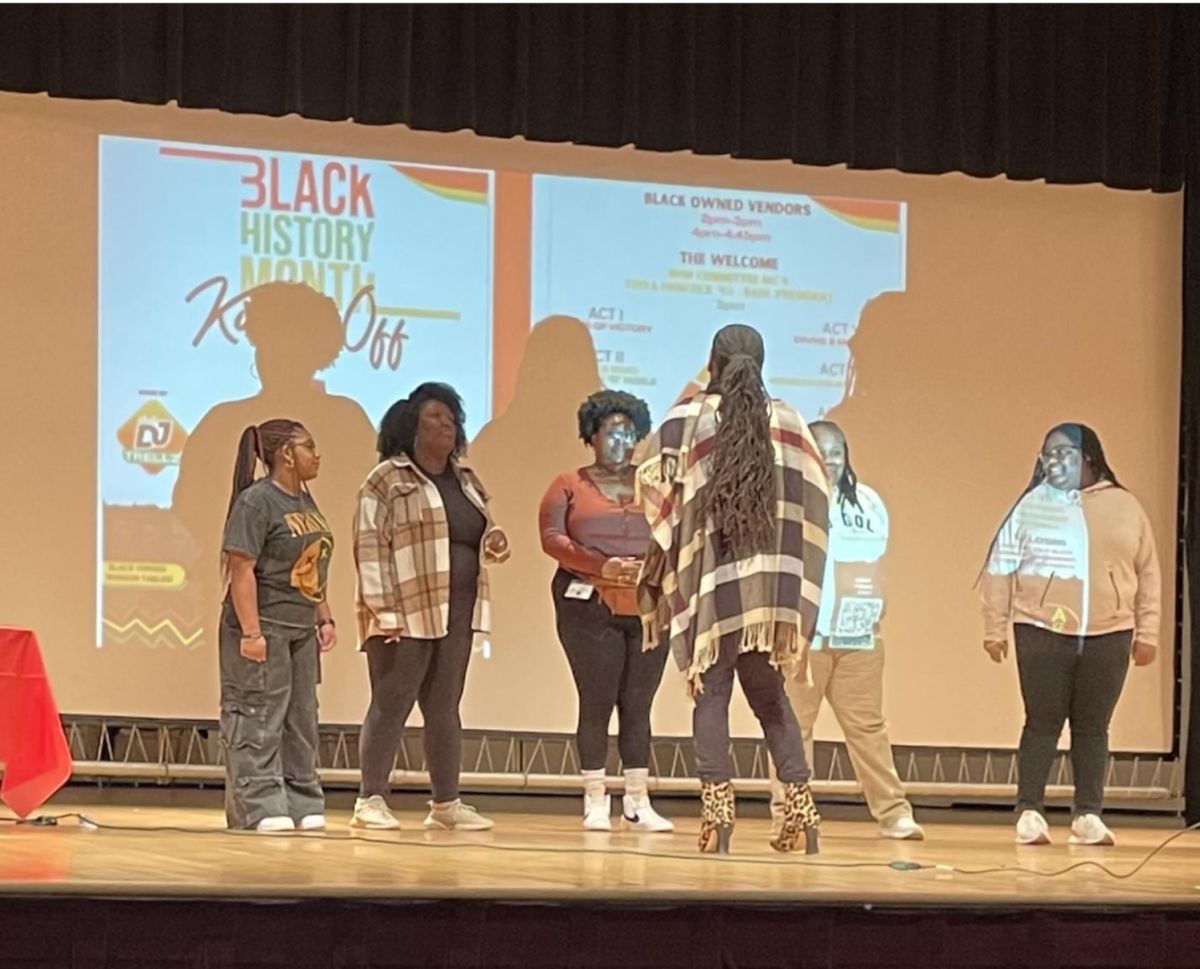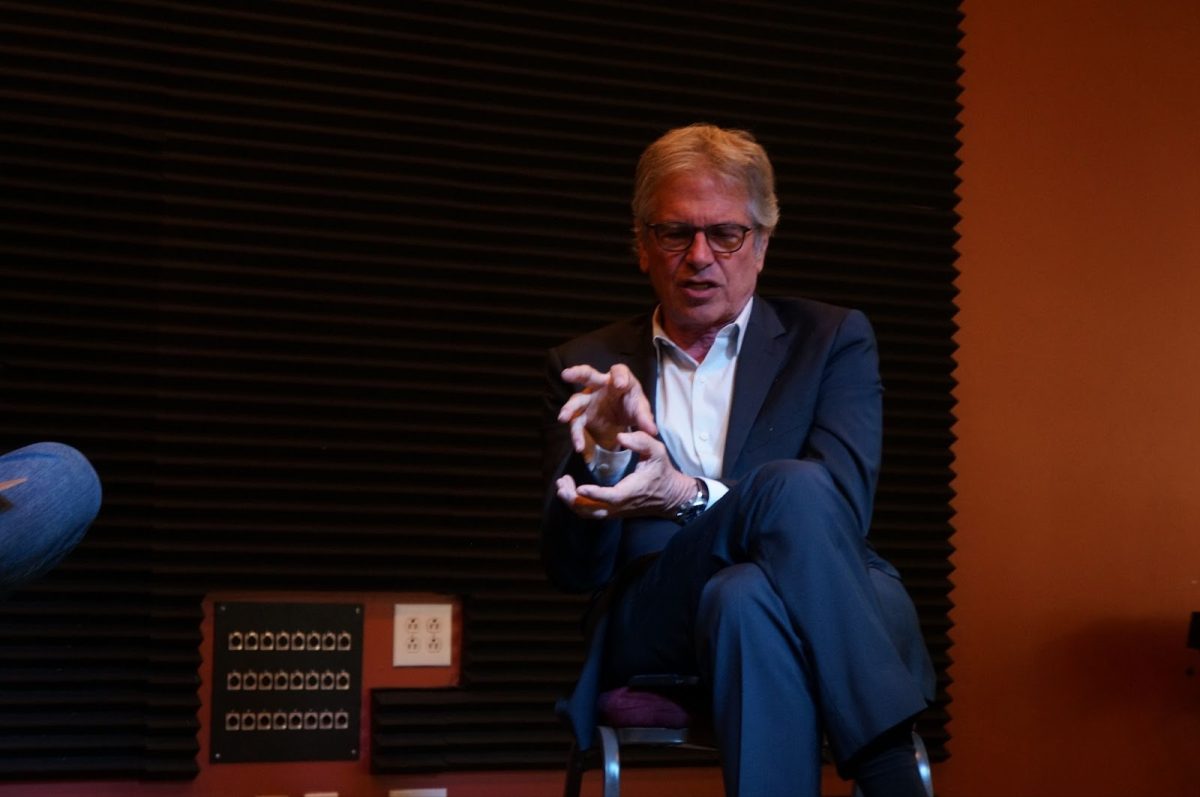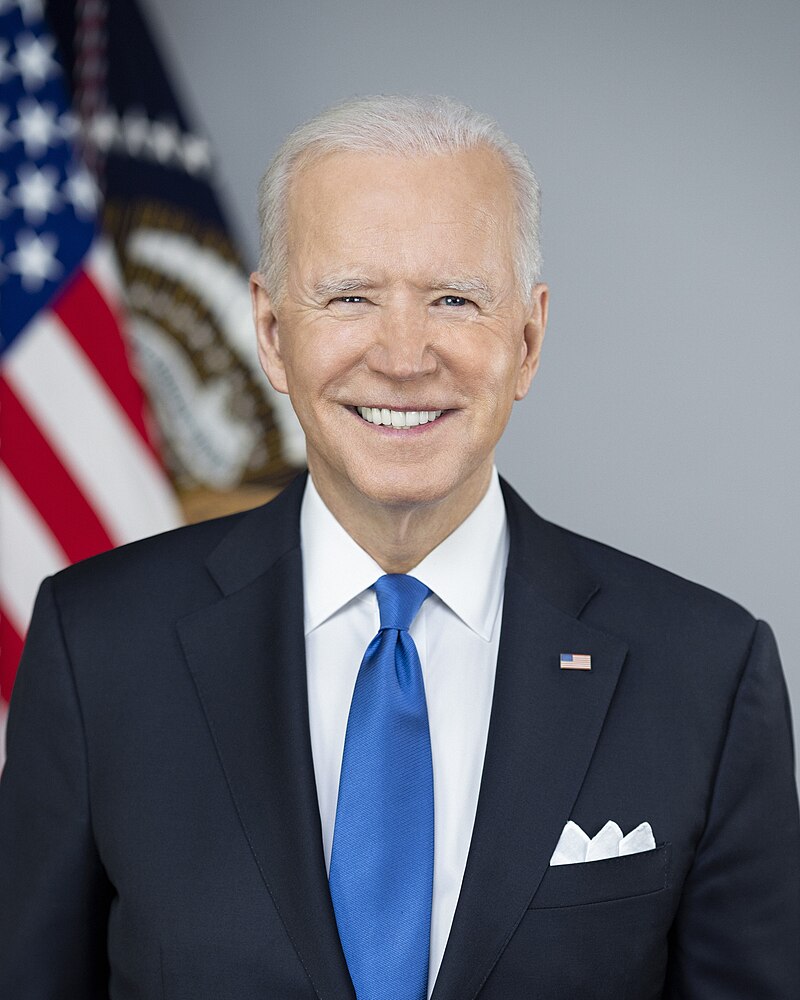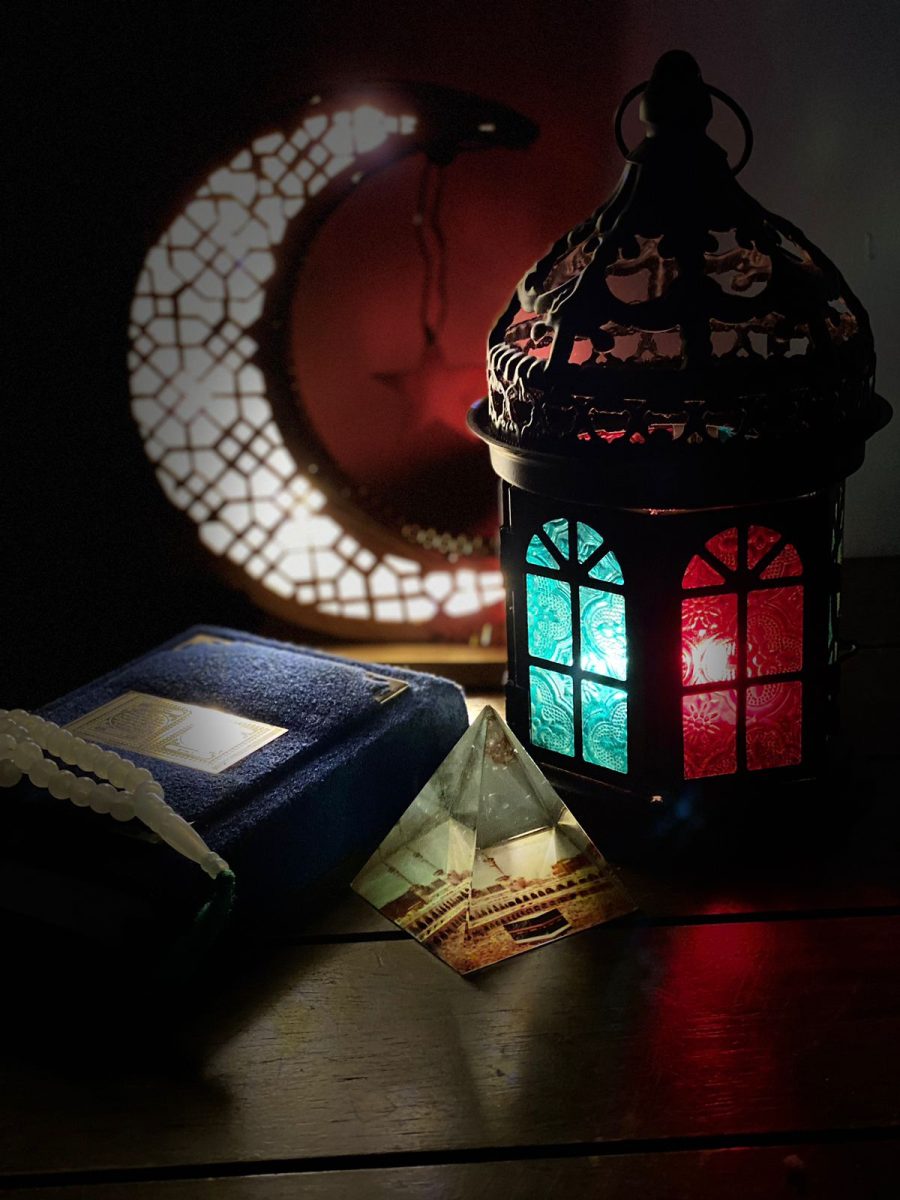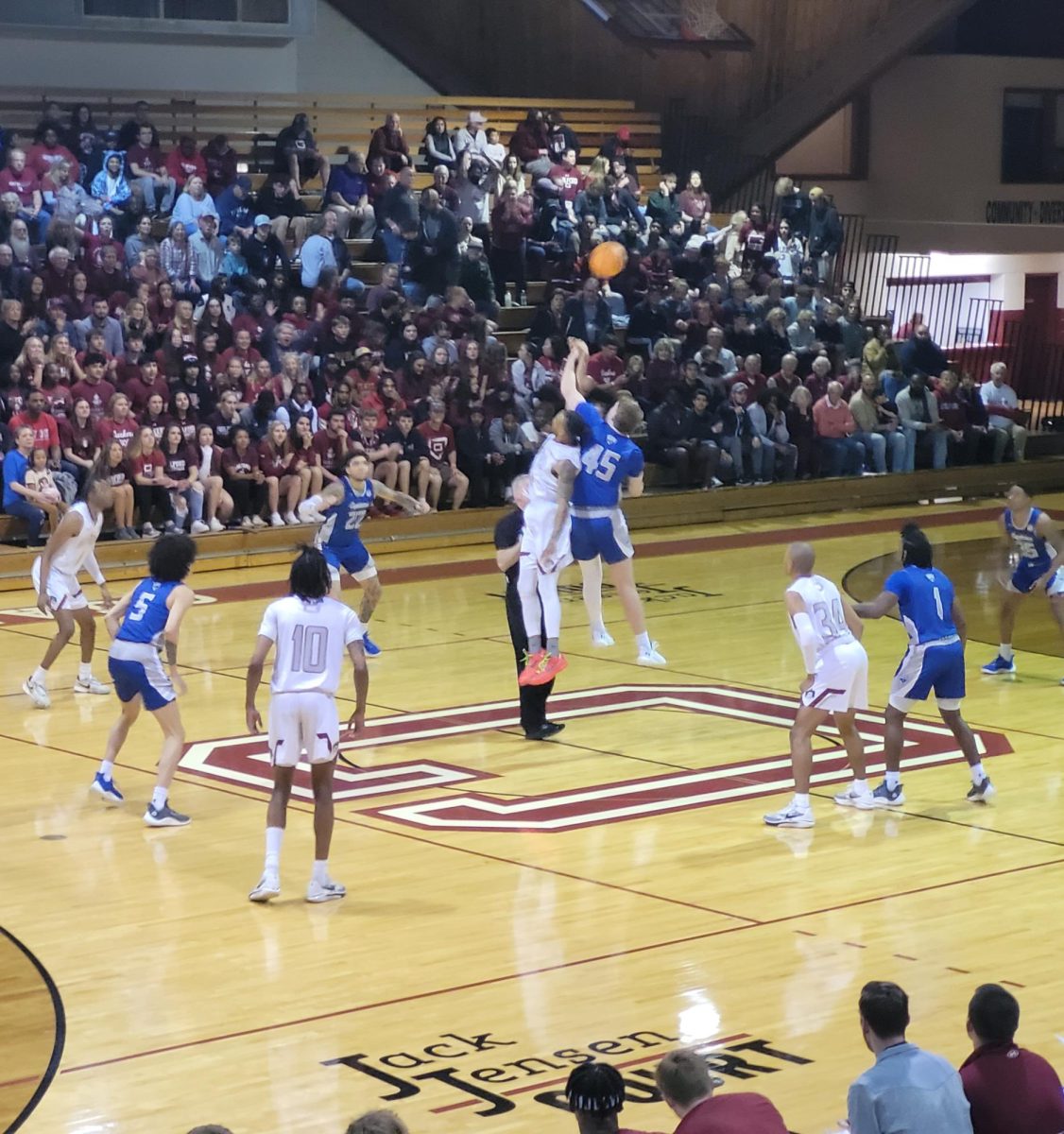A crowd of such magnitude that the marching was delayed. Marchers carrying signs and chanting, “This is what a democracy looks like.” Demonstrators of all ages and backgrounds coming together. This was the Women’s March on Washington.
The demonstration occurred Jan. 21, 2017 as a counteraction to President Donald Trump’s inauguration on Jan. 20. A rally was held at 10:00 a.m. and the march was scheduled to begin at 1:15 p.m.
Celebrities and activists including Madonna, Alicia Keys, Janelle Monáe, Gloria Steinem and Angela Davis, among others, spoke and performed to the crowds. Large screens were spread along Independence Ave. S.W. broadcasting the speakers.
The event was expected to gather around 200,000 people, but there were at least 500,000 people, according to the Associated Press. The inauguration of Trump had an estimated 160,000 people, according to the New York Times.
There were also sister marches around the world and across the country, including large turnouts in Los Angeles, New York City, London, Sydney, and others.
Solidarity was a recurring theme in the march. People wanted to demonstrate that during a Trump presidency, they would not keep quiet. They wanted to show to their families, their friends and total strangers that they would support one another during the next four years.
Brooke Kandel, 41, from Indianapolis, wanted to demonstrate specifically to her children how to respond peacefully to something that makes her upset.
“I want to put some positivity out where Trump put out negativity towards human rights and social justice and equality,” Kandel said.
Others wanted to send a message to the administration.
Ron Walton, 51, from D.C. wanted to make it clear to the Trump cabinet what he believes the march can show.
“I think it’s important to tell the administration we’re not going to stand for them. This country does not need to be made great again. This country has always been great and this is what greatness looks like,” Walton said.
Jen Robinson, 39, from Ft. Myers, Florida, also wanted the administration to notice and pay attention to the march.
“Hopefully the people recently elected are listening. There are more of us than there are of them,” Robinson said.
Reasons for marching were as varied as the people themselves. Some attended because of reproductive rights, others for Black Lives Matter. Signs for LGBT+ equality and immigration rights were popular as well. Many protested Trump, calling question to both his legitimacy and the potential dangers of his policies.
Francesca Jacobini, 33, from Leesburg, Virginia, attended to stand for the values she believes are important to America. “I march for the right to choose, for freedom of religion, for the right to be who you want to be,” Jacobini said.
Many demonstrators came in groups. Elizabeth Dye, 41, from Syracuse, New York, attended with five friends from her college days.
“We are here because we are outraged. We’re coming together to make a step to make a difference. We’re showing up peacefully and positively and we will keep showing up every day until change is made,” Dye said.
Charisse Adamson, 58, from Silver Springs, Maryland, said that, despite the differences in reasons, it was crucial that people did show up.
“We’re all here for different reasons, but what’s important is that we are all here. I can’t leave this to other people. I have to be able to stand up every day,” Adamson said.
Laurie Adamson, 29, from Silver Springs, Maryland, sees the march as a first step to continuous resistance.
“Before any action takes place, we need to have a dialogue. It starts from movements like this. Then momentum begins to build.”
The march ended in the “backyard” of the White House. People gathered around the Washington Monument, through the streets, and on the greens of D.C.
On one street leading out of D.C. sat Sandy Hansher, 73, from San Francisco, California. She held a sign that read, “I Fought for Women’s Rights 50 Years Ago.”
Handsher said the main difference between fighting then and fighting now is the reception of protest. Multiple people came up and thanked her for fighting for so long. “No one thanked me in the sixties,” she said.
To the people who have just begun their fight, Handsher had some encouragement. “These old men are not going to stick around, but we are. We will win,” she said.

